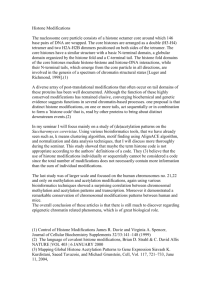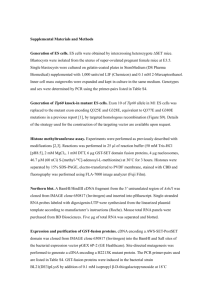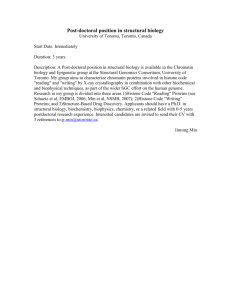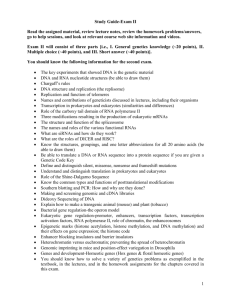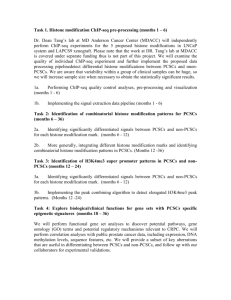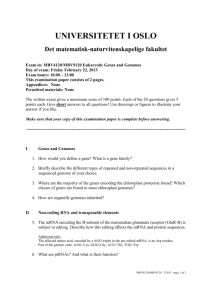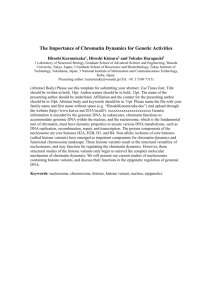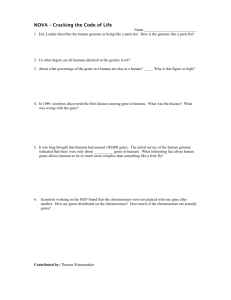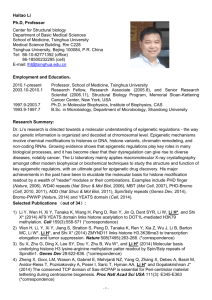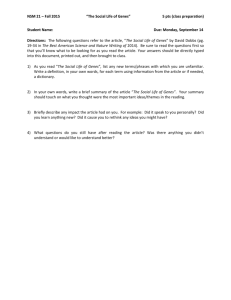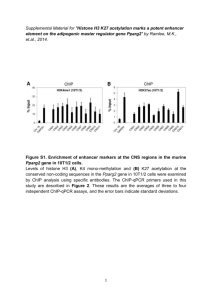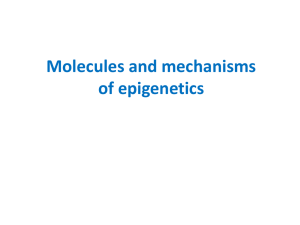Distinct Histone Modifications are Enriched in Non
advertisement
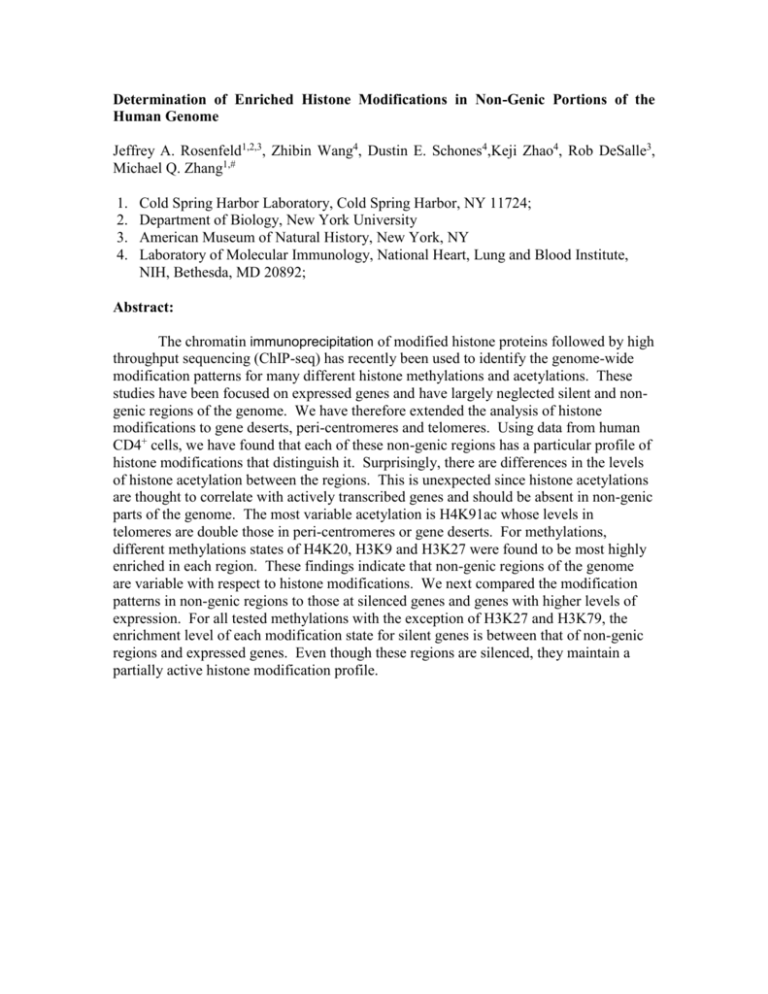
Determination of Enriched Histone Modifications in Non-Genic Portions of the Human Genome Jeffrey A. Rosenfeld1,2,3, Zhibin Wang4, Dustin E. Schones4,Keji Zhao4, Rob DeSalle3, Michael Q. Zhang1,# 1. 2. 3. 4. Cold Spring Harbor Laboratory, Cold Spring Harbor, NY 11724; Department of Biology, New York University American Museum of Natural History, New York, NY Laboratory of Molecular Immunology, National Heart, Lung and Blood Institute, NIH, Bethesda, MD 20892; Abstract: The chromatin immunoprecipitation of modified histone proteins followed by high throughput sequencing (ChIP-seq) has recently been used to identify the genome-wide modification patterns for many different histone methylations and acetylations. These studies have been focused on expressed genes and have largely neglected silent and nongenic regions of the genome. We have therefore extended the analysis of histone modifications to gene deserts, peri-centromeres and telomeres. Using data from human CD4+ cells, we have found that each of these non-genic regions has a particular profile of histone modifications that distinguish it. Surprisingly, there are differences in the levels of histone acetylation between the regions. This is unexpected since histone acetylations are thought to correlate with actively transcribed genes and should be absent in non-genic parts of the genome. The most variable acetylation is H4K91ac whose levels in telomeres are double those in peri-centromeres or gene deserts. For methylations, different methylations states of H4K20, H3K9 and H3K27 were found to be most highly enriched in each region. These findings indicate that non-genic regions of the genome are variable with respect to histone modifications. We next compared the modification patterns in non-genic regions to those at silenced genes and genes with higher levels of expression. For all tested methylations with the exception of H3K27 and H3K79, the enrichment level of each modification state for silent genes is between that of non-genic regions and expressed genes. Even though these regions are silenced, they maintain a partially active histone modification profile.
